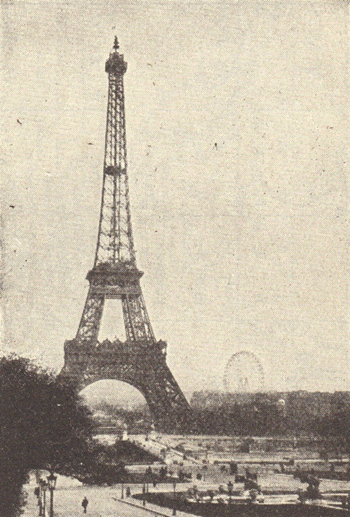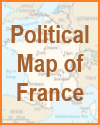| Eiffel Tower, Paris, France |
| studenthandouts.com > World Geography > Europe > Western Europe > France |
 The Eiffel Tower, Paris, France. This tower was completed in 1889, to serve as a feature of the Paris Exposition of that year. The view from its summit extends for eighty-five miles. During World War I it was used as a mount for searchlights to prevent German air raids. [Photograph taken circa 1920.] Click here to enlarge.
The Eiffel Tower, Paris, France. This tower was completed in 1889, to serve as a feature of the Paris Exposition of that year. The view from its summit extends for eighty-five miles. During World War I it was used as a mount for searchlights to prevent German air raids. [Photograph taken circa 1920.] Click here to enlarge.
The Eiffel Tower, one of the most recognizable landmarks in the world, stands as a symbol of French engineering prowess and artistic vision. Located in Paris on the Champ de Mars near the Seine River, this iconic structure was designed by the French engineer Gustave Eiffel and his company for the 1889 Exposition Universelle, a world's fair held to celebrate the 100th anniversary of the French Revolution. Construction of the Eiffel Tower began in January 1887 and was completed in March 1889, taking just over two years. At a height of 324 meters (1,063 feet), it was the tallest man-made structure in the world until the completion of the Chrysler Building in New York City in 1930. The tower's design, composed of wrought iron lattice, was both innovative and controversial at the time. Many artists and intellectuals criticized its appearance, but it has since become a beloved emblem of Paris and a marvel of modern engineering. The Eiffel Tower is divided into three levels accessible to the public. The first and second levels feature restaurants and shops, offering breathtaking views of Paris. The third level, the top observation deck, provides an unparalleled panoramic view of the cityscape. Over 7 million visitors ascend the tower annually, making it one of the most visited paid monuments in the world. The structure weighs approximately 10,100 tons and consists of 18,038 individual iron parts held together by 2.5 million rivets. Despite its immense size and weight, the tower is designed to withstand the elements, including strong winds and thermal expansion. Gustave Eiffel incorporated advanced techniques to ensure the tower's stability and durability, which have stood the test of time. Beyond its architectural significance, the Eiffel Tower has also played a role in scientific research. Eiffel himself used it for experiments in physics and aerodynamics. Today, it hosts various antennas and is used for broadcasting radio and television signals. The Eiffel Tower continues to captivate millions of visitors from around the world with its majestic presence and enduring charm, symbolizing the innovative spirit and cultural richness of France. |
 |
 |
 |
 |
 |
 |
|---|
| studenthandouts.com > World Geography > Europe > Western Europe > France |






